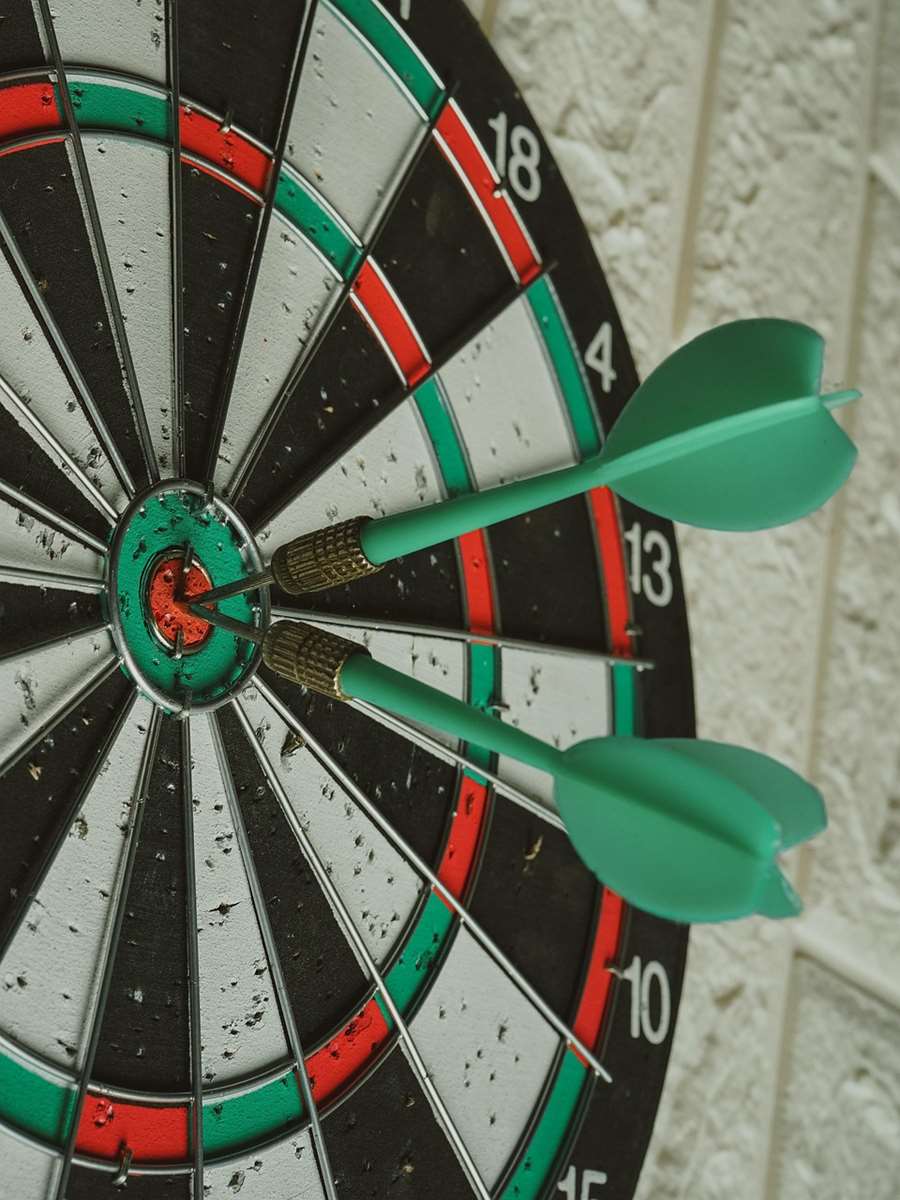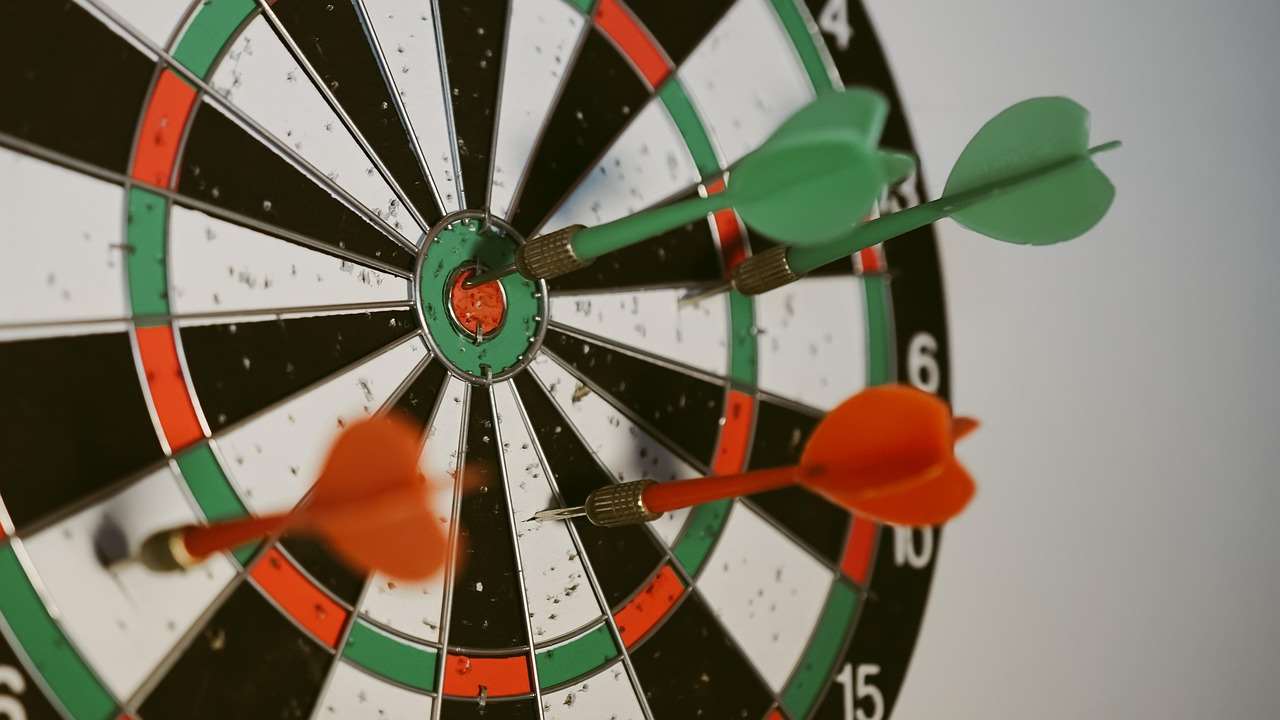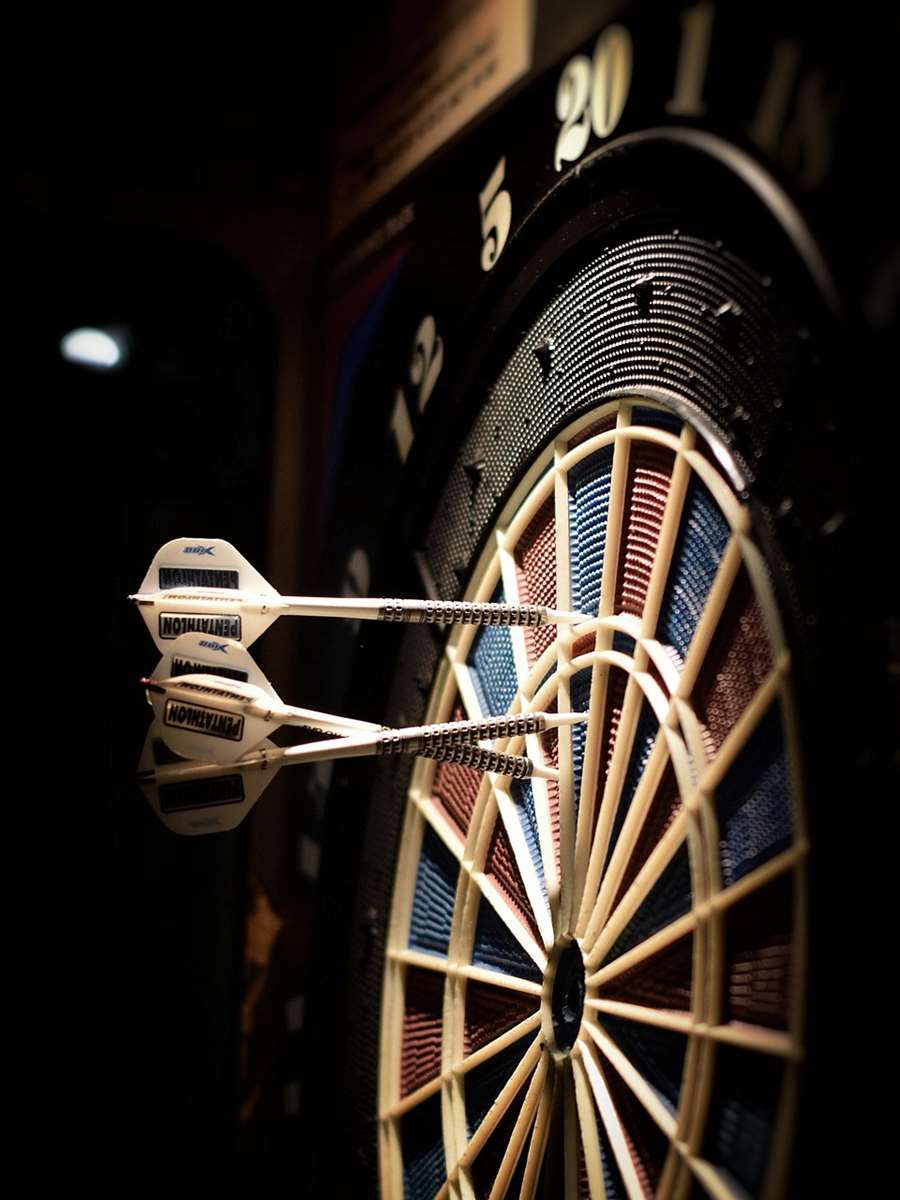The best wall material behind a dartboard is one that’s durable, forgiving, and aesthetically pleasing. Corkboard offers an excellent balance of these qualities. This article will explore various materials, their pros and cons, and help you choose the ideal backing for your dartboard setup.
⚠️ Still Using Pen & Paper (or a Chalkboard)?! ⚠️
Step into the future! The Dart Counter App handles all the scoring, suggests checkouts, and tracks your stats automatically. It's easier than you think!
Try the Smart Dart Counter App FREE!Ready for an upgrade? Click above!
Choosing the Best Wall Material Behind Dartboard
Protecting your wall from stray darts is crucial for any dart enthusiast. Darts can easily damage drywall, leaving unsightly holes and requiring frequent repairs. Choosing the right wall material behind your dartboard not only saves you time and money but also enhances your overall dart-playing experience. Think of it as an investment in both your wall and your enjoyment of the game. Selecting a suitable backboard is nearly as important as selecting quality dart equipment.

Several factors contribute to the decision-making process. These include the material’s durability, its ability to absorb impact, its aesthetic appeal, and its cost. Different players have different needs and preferences, and the best wall material behind dartboard for one person may not be the best for another. For instance, someone on a tight budget might prioritize cost-effectiveness, while someone else might be willing to spend more for a more aesthetically pleasing or durable option. It’s all about finding the right balance.
Key Considerations When Selecting Dartboard Backing
- Impact Absorption: The material should be able to absorb the impact of darts without sustaining significant damage.
- Durability: It should withstand repeated impacts and resist wear and tear over time.
- Size: The backing should be large enough to cover the area around the dartboard most likely to be hit by stray darts.
- Aesthetics: The material should complement the décor of your game room or living space.
- Cost: The price should be within your budget.
- Ease of Installation: Consider how easy it is to install the backing yourself or whether you’ll need professional help.
Top Contenders for Dartboard Backing Materials
Several materials stand out as being particularly well-suited for use as dartboard backings. These materials offer varying levels of protection, durability, and aesthetic appeal.
Corkboard
Corkboard is a popular choice for several reasons. It’s relatively inexpensive, easy to install, and provides good impact absorption. Darts stick easily into cork, minimizing bounce-outs and protecting your wall from damage. However, corkboard can be susceptible to wear and tear over time, especially with frequent use. It may also require occasional replacement. The key to longevity with cork is to choose a thicker, denser board. Thinner cork tends to crumble more easily.

Foam Padding
Foam padding is another affordable option that offers excellent impact absorption. It’s lightweight, easy to cut and install, and provides a soft landing for stray darts. Foam padding is available in various thicknesses and densities, allowing you to customize the level of protection. However, foam padding may not be as durable as some other materials, and it can be prone to tearing or punctures. It also has a less refined aesthetic than cork or wood. Still, foam padding offers good protection for its price.
Wood Paneling
Wood paneling provides a more durable and aesthetically pleasing option than cork or foam. It can withstand repeated impacts and resist wear and tear over time. Wood paneling also offers a more professional look and can complement the décor of your game room. However, wood paneling is generally more expensive than cork or foam, and it may require more effort to install. Darts can also bounce off wood more easily, potentially causing damage to other areas of the room. Proper installation is essential for achieving the desired level of protection and appearance.
Dartboard Surrounds
Dartboard surrounds are specifically designed to protect the wall around a dartboard. They’re typically made of high-density foam or rubber and provide excellent impact absorption. Dartboard surrounds are easy to install and offer a clean, professional look. They’re also available in various colors and styles to match your décor. However, dartboard surrounds can be more expensive than other options, and they may not provide as much coverage as a larger backing material. Many players consider a surround to be the best wall material behind dartboard simply for its ease of setup and aesthetic.

DIY Solutions for Dartboard Backing
For the DIY enthusiast, there are many creative solutions for creating a custom dartboard backing. These can involve repurposing existing materials or building a backing from scratch. One popular option is to use reclaimed wood to create a rustic-looking backing. Another option is to cover a piece of plywood with fabric or vinyl for a more polished look. The possibilities are endless, and the only limit is your imagination. DIY solutions can be a great way to save money and create a unique and personalized dartboard setup.
Installation Tips for Your Dartboard Backing
Proper installation is crucial for ensuring that your dartboard backing provides adequate protection and looks its best. Here are a few tips to keep in mind:
- Measure Carefully: Before you start, measure the area around your dartboard to determine the appropriate size for your backing material.
- Use the Right Tools: Make sure you have the necessary tools for cutting and installing the material, such as a saw, drill, level, and measuring tape.
- Secure the Backing Properly: Use screws, nails, or adhesive to securely attach the backing to the wall.
- Level the Dartboard: Ensure that the dartboard is level before you start playing. A level dartboard will improve your accuracy and prevent the board from shifting over time.

Maintaining Your Dartboard Backing
To ensure that your dartboard backing lasts for years to come, it’s important to maintain it properly. This includes cleaning it regularly, repairing any damage, and replacing it when necessary.
- Cleaning: Wipe down the backing with a damp cloth to remove dust and dirt.
- Repairing Damage: Repair any holes or tears in the backing with appropriate patching materials.
- Replacing: Replace the backing when it becomes excessively worn or damaged.
Alternative Wall Protection Strategies
Beyond choosing the right material, consider these strategies for additional wall defense:
- Dartboard Lighting: Proper lighting can improve visibility and reduce the likelihood of stray darts.
- Throw Line Placement: Ensure the throw line is at the correct distance to promote accurate throws.
- Dart Maintenance: Keeping your darts in good condition (sharpened tips, properly weighted) can reduce bounce-outs.
These strategies, when combined with the **best wall material behind dartboard**, offer comprehensive protection.
Finding Value in Dart Equipment
Protecting your walls is an investment, but so is choosing the right darts. When considering your dart setup, remember to think about finding value in budget dart sets as well as how they affect your game and your walls. Proper weight and grip can improve accuracy and reduce wayward throws.

Best Wall Material Behind Dartboard: Making the Right Choice
Ultimately, the best wall material behind dartboard depends on your individual needs and preferences. Consider the factors discussed in this article, such as durability, impact absorption, aesthetics, and cost, to make an informed decision. Whether you opt for corkboard, foam padding, wood paneling, a dartboard surround, or a DIY solution, make sure to install it properly and maintain it regularly to ensure that it provides adequate protection for your wall. Protecting your investment will mean you can continue playing for years to come.
Considering Dart Types and Their Impact
The type of darts you use can also influence the necessary level of wall protection. Steel tip darts, for instance, have sharper points and can cause more significant damage compared to soft tip darts. If you primarily use steel tip darts, you might want to consider a more durable and impact-resistant backing material. Conversely, if you use soft tip darts, you might be able to get away with a less robust option. Before you choose which protection to use, it’s important to consider what types of darts are used to play the game. You should consider if you are investing in premium dart equipment.
Conclusion
Choosing the best wall material behind dartboard is a crucial step in setting up a safe and enjoyable dart-playing environment. By considering the factors discussed in this article and weighing the pros and cons of different materials, you can make an informed decision that protects your walls and enhances your overall dart-playing experience. So, take the time to research your options, choose the right material, and install it properly. You might even want to compare the quality of dart types before making your choice. Now, go out there and enjoy the game without worrying about damaging your walls! Consider investing in dartboard surrounds as an easy way to install the protection and get playing quickly!
Hi, I’m Dieter, and I created Dartcounter (Dartcounterapp.com). My motivation wasn’t being a darts expert – quite the opposite! When I first started playing, I loved the game but found keeping accurate scores and tracking stats difficult and distracting.
I figured I couldn’t be the only one struggling with this. So, I decided to build a solution: an easy-to-use application that everyone, no matter their experience level, could use to manage scoring effortlessly.
My goal for Dartcounter was simple: let the app handle the numbers – the scoring, the averages, the stats, even checkout suggestions – so players could focus purely on their throw and enjoying the game. It began as a way to solve my own beginner’s problem, and I’m thrilled it has grown into a helpful tool for the wider darts community.